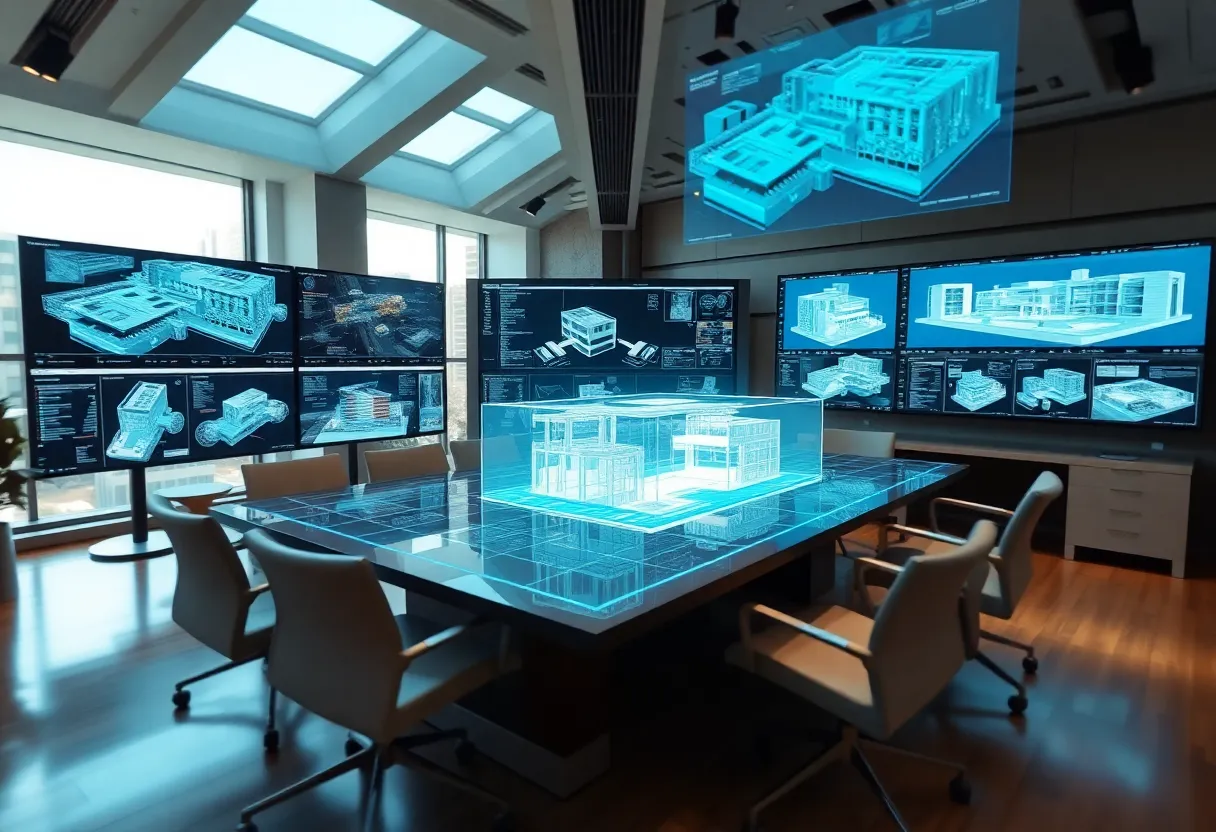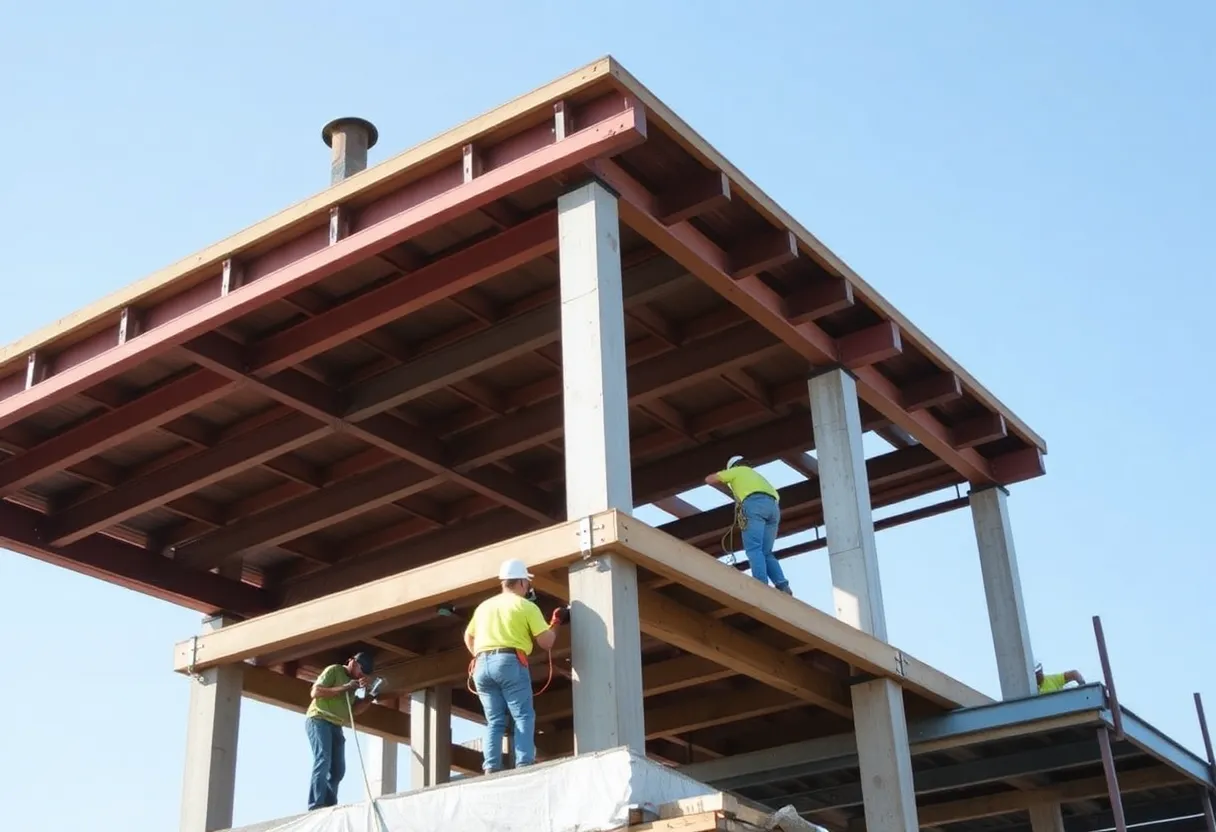Global, October 8, 2025
News Summary
The global construction design software market is valued at US$9.9 Billion and is projected to reach US$15.4 Billion, driven by rapid adoption of BIM, AI, cloud platforms and digital twin technologies. These tools enable 2D/3D modeling, structural analysis, clash detection and real-time collaboration, helping firms reduce risk, cut costs and accelerate delivery. Policy mandates for BIM, SaaS licensing models, and tighter integration with ERP, procurement and prefabrication ecosystems are broadening market reach. Rising venture funding into AI-driven AEC startups and growing in-house AI use are accelerating innovation, while AR/VR and automation boost stakeholder engagement, safety and productivity.
Construction design software market valued at US$9.9 Billion in 2024; set to rise to US$15.4 Billion by 2030
The global market for Construction Design Software was estimated at US$9.9 Billion in 2024. The market is projected to reach US$15.4 Billion by 2030, with a projected CAGR of 7.7% from 2024 to 2030. These figures reflect rapid adoption of BIM, AI, cloud platforms and digital twin technologies that are reshaping planning and delivery across architecture, engineering and construction workflows.
Why the market is expanding
Construction design software is now central to modern AEC workflows. These tools provide 2D drafting, 3D modeling, Building Information Modeling (BIM), structural analysis and real-time collaboration. Digital design tools streamline workflows, enhance project accuracy, and reduce the cost and time associated with manual design revisions and on-site changes.
Policy, mandates and industry shifts
There is a clear shift from conventional CAD to advanced BIM systems, especially in large-scale residential, commercial and infrastructure projects. Governments in regions such as North America, Europe, and Asia-Pacific are mandating BIM usage for public infrastructure planning. Mandating BIM reinforces the software’s role in achieving sustainability, cost transparency, and lifecycle asset management.
Risk reduction and lifecycle management
Construction firms use design software to simulate construction sequencing, simulate energy performance, and perform clash detection. These simulations help mitigate risks before physical work begins and support lifecycle management when paired with digital twin platforms. Digital twin technology creates a real-time digital representation of a physical building or infrastructure asset, allowing project managers to monitor structural health, optimize maintenance, and simulate performance based on real-time data.
Cloud, AI and immersive tools
Innovations in cloud computing, artificial intelligence (AI), and digital twin technologies are rapidly advancing construction design software functionality. Cloud-based platforms allow for real-time data sharing and team collaboration, enabling multiple stakeholders to work simultaneously on a single project model regardless of location. AI integration supports generative design that suggests multiple design outcomes based on constraints and improves creativity and design efficiency. Augmented reality (AR) and virtual reality (VR) tools enhance stakeholder engagement by enabling immersive walkthroughs and spatial planning reviews.
Market reach and business models
Demand for construction design software is growing in both mature and emerging markets. Developed economies with increased investments include the U.S., UK, Germany, Japan, and Australia, driven by smart city development, retrofitting, and green building initiatives. Emerging markets with heavy investments in urbanization, transport infrastructure, and affordable housing include India, Indonesia, Vietnam, and several African nations. The emergence of Software-as-a-Service (SaaS) models and modular licensing options is lowering entry barriers for small and mid-sized firms.
Integration and supply-chain impacts
Design tools integrated with construction management software, ERP systems, and procurement platforms are increasingly valuable for end-to-end project planning. Strategic partnerships between software developers, construction tech firms, and hardware providers such as 3D scanners and drones are creating ecosystems that streamline design-to-construction workflows. Expansion of modular and prefabricated construction is driving demand for precision design software that supports off-site planning and factory-based component fabrication.
Venture activity and financing trends
Venture activity in the built environment saw significant year-over-year increases during Q2. Of 159 AEC industry venture deals recorded in Q2, 110 deals (nearly 70%) involved startups identified as AI/ML-driven. Overall inflows increased by $1.7 billion, or 75.2%, from Q2 2024 to $3.96 billion. Of the $3.96 billion invested in built environment tech startups in Q2, $2.71 billion (roughly 68%) flowed into companies integrating AI/ML. Deal volume increased 41% over the same period, from 113 deals to 159 deals.
Adoption of AI inside firms
Industry surveys show rising adoption of AI. More than a third of industry professionals report already using AI in their businesses (34%). Those using AI report saving an average of over three hours per week. Two-thirds of respondents believe AI will transform the industry within the next five years. AI is frequently used for administrative tasks, project management, planning and design, and sales and marketing functions, and larger firms report higher adoption.
Labour, safety and productivity pressures
The sector is also responding to a long-running labor shortage, pressure to improve safety and the need to accelerate schedules. Adoption of robotics, automation, drones, and prefabrication is intended to reduce waste, improve safety, and boost productivity. Modular and prefabricated projects, 3D printing pilots, and on-site automation have all produced pilot results showing reduced timelines and labor needs in certain cases.
What this means for firms
Digital design platforms are evolving from optional tools into strategic necessities as urban growth accelerates. Growth drivers for the market include widespread shift to BIM, increasing integration of AI and generative design engines, adoption of cloud-based collaboration tools, expansion of digital twin applications, and AR/VR integration that enhances visualization and pre-construction decision-making.
FAQ
What was the market size in 2024?
The global market for Construction Design Software was estimated at US$9.9 Billion in 2024.
What is the projection for 2030?
The market is projected to reach US$15.4 Billion by 2030.
What is the projected growth rate?
The projected CAGR is 7.7% from 2024 to 2030.
How active was venture funding in Q2?
Of 159 AEC industry venture deals recorded in Q2, 110 deals (nearly 70%) involved startups identified as AI/ML-driven.
How much venture capital went to AI/ML companies in Q2?
Of the $3.96 billion invested in built environment tech startups in Q2, $2.71 billion (roughly 68%) flowed into companies integrating AI/ML.
How many professionals report already using AI?
More than a third of industry professionals report already using AI in their businesses (34%).
Key features at a glance
| Feature | Why it matters | Examples or effects |
|---|---|---|
| 2D drafting / 3D modeling | Foundational design functions | Accurate plans, visual checks, basic coordination |
| Building Information Modeling (BIM) | Project coordination and lifecycle data | Mandates for public projects, clash detection, asset management |
| Cloud collaboration | Real-time teamwork across locations | Simultaneous editing, hybrid work enablement |
| AI / Generative design | Design exploration and automation | Faster options, productivity gains, risk flagging |
| Digital twin | Operations and maintenance optimization | Structural health monitoring, predictive maintenance |
| AR / VR | Stakeholder engagement and spatial checks | Immersive walkthroughs, planning reviews |
| SaaS / modular licensing | Lower entry costs and flexible subscriptions | Easier adoption by small and mid-sized firms |
For firms planning technology investments, the near-term landscape points to continued spending on integrated digital platforms that combine design, data and operations. The combination of policy mandates, venture capital flows into AI-driven startups, and measurable time and cost savings is driving faster adoption across project types and regions.
Deeper Dive: News & Info About This Topic
Additional Resources
- BDC Network: AI powers $3.96B venture boom in U.S. construction tech
- Wikipedia: Construction technology
- ResearchAndMarkets / Bizwire: Construction & Design Software Global Strategic Research Report 2025–2030
- Google Search: Construction design software market 2025 2030
- Construction Dive: Design-build smarter construction
- Google Scholar: Design-build construction efficiency
- Houzz / HomeNewsNow: 2025 State of AI in Construction and Design report
- Encyclopedia Britannica: AI in construction
- Precedence Research: Construction and Design Software Market
- Google News: construction design software market
Author: Construction FL News
The FLORIDA STAFF WRITER represents the experienced team at constructionflnews.com, your go-to source for actionable local news and information in Florida and beyond. Specializing in "news you can use," we cover essential topics like product reviews for personal and business needs, local business directories, politics, real estate trends, neighborhood insights, and state news affecting the area—with deep expertise drawn from years of dedicated reporting and strong community input, including local press releases and business updates. We deliver top reporting on high-value events such as the Florida Build Expo, major infrastructure projects, and advancements in construction technology showcases. Our coverage extends to key organizations like the Associated Builders and Contractors of Florida and the Florida Home Builders Association, plus leading businesses in construction and legal services that power the local economy such as CMiC Global and Shutts & Bowen LLP. As part of the broader network, including constructioncanews.com, constructionnynews.com, and constructiontxnews.com, we provide comprehensive, credible insights into the dynamic construction landscape across multiple states.





